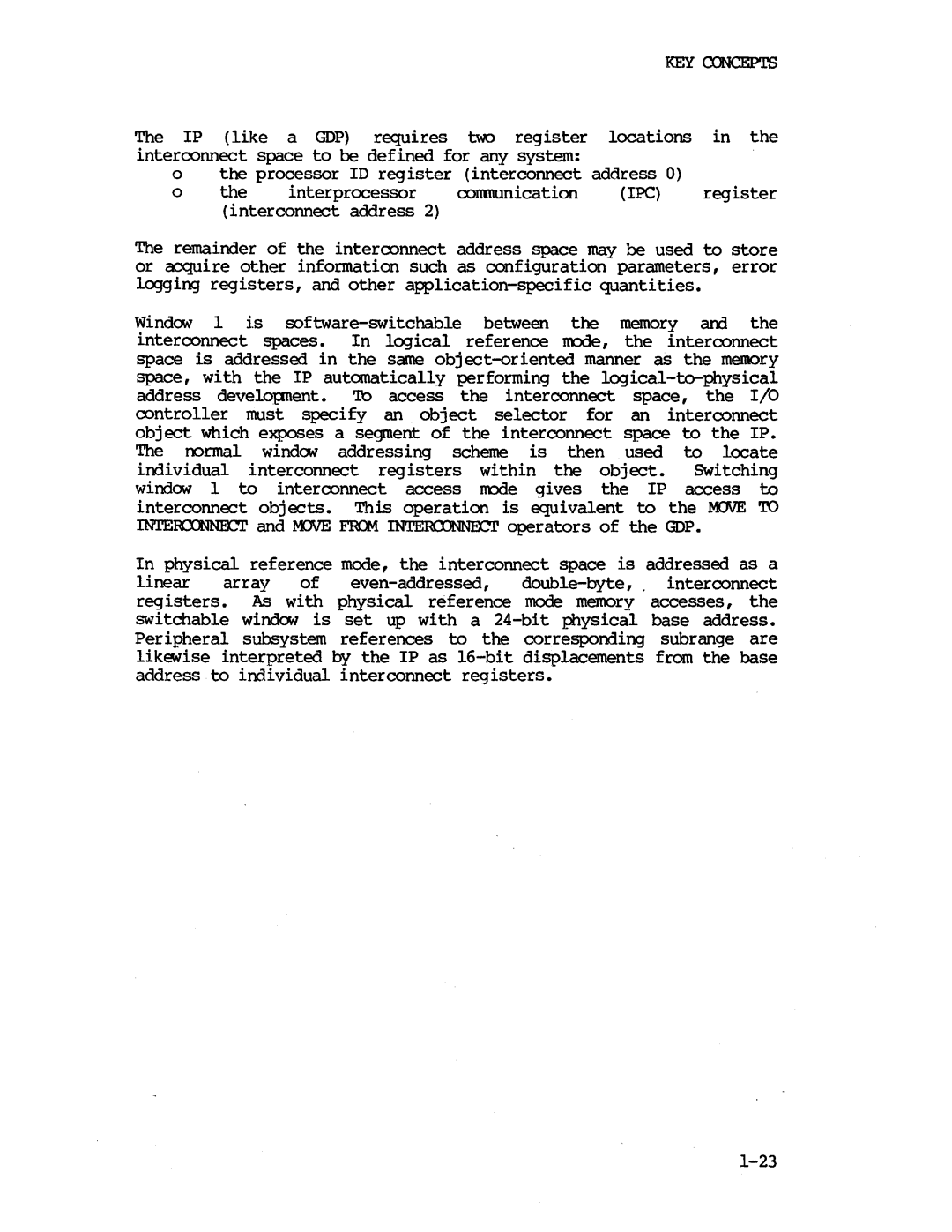KEY CONCEPTS
The IP (like a GOP) requires two register locations in the interconnect space to be defined for any system:
o the processor ID register (interconnect address 0)
o the interprocessor communication (IPC) register (interconnect address 2)
The remainder of the interconnect address space may be used to store or acquire other infoonation such as configuration parameters, error logging registers, and other application-specific quantities.
Window 1 is software-switchable between the memory and the interconnect spaces. In logical reference node, the interconnect space is addressed in the same object-oriented manner as the memory space, with the IP automatically performing the logical-to-physical address developnent. 'lb access the interconnect space, the I/O controller must specify an object selector for an interconnect obj ect which exposes a segment of the interconnect space to the IP. The normal window addressing scheme is then used to locate
individual interconnect registers within the object. Switching window 1 to interconnect access mode gives the IP access to interconnect objects. This operation is equivalent to the MOVE TO
INTE~ and MJVE FRG1 INTE~ ~rators of the GOP.
In physical reference mode, the interconnect space is addressed as a
linear array of even-addressed, double-byte,. interconnect registers. As with physical reference mode memory accesses, the switchable window is set up with a 24-bit physical base address. Peripheral subsystem references to the corresponding subrange are likewise interpreted by the IP as l6-bit displacements from the base address to individual interconnect registers.

